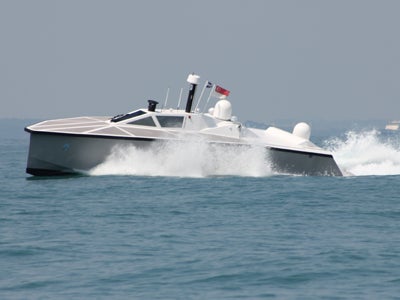
Zycraft has successfully completed the phase one development of the Vigilant-class independent unmanned surface vessel (IUSV), LongRunner.
During the development phase, the LongRunner vessel has successfully completed in-water testing off Singapore waters and travelled a total of 2000nm over 24 months.
The IUSV has also undergone several fleet battle experiments and validated continuous unmanned operations, exceeding 48 hours.
Remotely commanded and controlled from Zycraft’s headquarters ashore using satellite communications, the unmanned vessel travelled 100nm into the South China Sea during the phase one development period.
Capable of being operated from base to base and independent of a mother ship, the 16.5m-long IUSV features Arovex advanced composite material and allows more payload and fuel for enhanced range and operational capabilities.
Zycraft’s president, James Soon, said that the Vigilant IUSV has been designed to be very effective in above-water maritime surveillance and could be the nexus for widespread USV employment.
"The IUSV is also capable of collision avoidance and can certainly take care of itself," Soon said.
In order to provide enhanced situational awareness to a shore base, the unmanned system is fitted with radar, electronic support measures (ESM), and electro-optic sensors as well as automated identification system (AIS).
"Several of these IUSVs can effectively cover hundreds of miles of coastline for border protection," Soon continued.
With an endurance capacity exceeding 1200nm, the IUSV can be used to conduct missions including coastal security, search and rescue, and maritime logistics for nations with large exclusive economic zone.
Navies with the IUSV concept do not need to construct bigger ships to carry small USVs, but instead can depend on the size of the bigger IUSV to have high endurance and carry the needed payloads, according to Zycraft.
Currently, Zycraft is working with several vendor partners to develop sensor technologies to further enhance the ability of the IUSV roles.
Image: Vigilant-class unmanned vessel undergoing testing at sea. Photo: courtesy of Zycraft.





